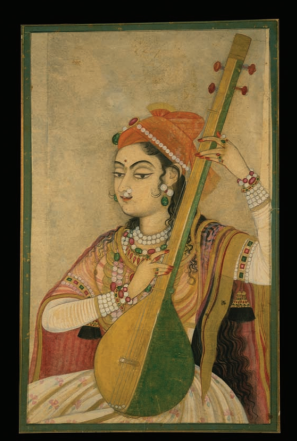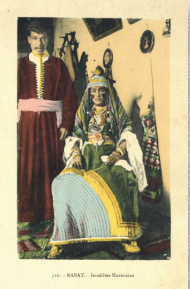The Night of the Henna has been a cherished tradition for centuries, dating back to at least 1000 BCE.
Henna Traditions
During this special night, a young girl is prepared for her wedding by undergoing a process of purification, dressing, and adorning herself with jewelry. One of the key elements of this ceremony is the application of henna markings on her body. The Night of the Henna is typically celebrated with a joyous gathering hosted by the families of the bride and groom, where not only the bride but also the guests are often adorned with henna.

The henna markings are skillfully applied by either the bride’s mother or the groom’s mother, unless there is a professional henna artist available for hire. The festivities include traditional songs, dancing, and a lavish feast. The bride, often veiled except for her hennaed hands and feet, may be seated on a raised platform, showcasing her finest attire and jewels. Friends and relatives shower her with gifts and money, with the latter sometimes dabbed with a bit of henna to ward off the “Evil Eye.” Henna is believed to attract good luck and repel bad luck, adding an auspicious touch to the celebration. The Night of the Henna can span many hours or even the entire night, and it remains one of the most beloved and widespread folk traditions around the world.

Throughout history, henna has been predominantly associated with women, particularly those in their reproductive years, rather than children or elders. This distinction arises from the potential harm henna can cause to infants and children who have homozygous G6PD deficiency, a genetic blood enzyme disorder commonly found in regions with endemic malaria.
The observed effects of henna on post-pubescent females, with occasional harm to young males, have influenced the practice of considering henna more suitable for women than men. However, men have also used henna in certain contexts, such as having a “Night of the Henna” before marriage, albeit with simpler patterns and fewer applications. In some instances, men have used henna for luck before going into battle or to celebrate Islamic festival days, such as Eid. While henna was indigenous to Israel during the formation of Christianity, its use was not as prevalent among Christians as it was among Jewish communities and those practicing earlier religions that incorporated henna into their special occasions. After the first century CE, as Jewish populations spread beyond Israel, henna use did not extend beyond the natural growth zone of the plant. Nevertheless, Sephardic and Mizrahi Jewish communities continued to uphold Night of the Henna traditions and utilize henna for marking girls at Purim, weddings, and Passover celebrations.

The integration of henna into Muslim cultural practices occurred during the period of Islam’s formation when henna was already a part of wellness and social celebrations in Arabia. As Islam spread, so did the culture of bathing, where henna became an integral part of the bathing process. Muslim women used henna to dye their hair, fingertips, and soles for beautification and wellness purposes. Ritual ablution, including the application of henna, became customary before prayer to purify the body, especially for women to remove reproductive blood and fluids associated with menstruation, childbirth, and sexual activity. As Muslim culture expanded, henna and bathing customs spread to regions such as Spain, Africa’s Atlantic coast, the Ottoman and Persian empires, and Muslim communities in western China, Russia, India, and Malaysia.
During periods of Muslim influence, such as in medieval Sicily or when Moorish influence prevailed in Spain, henna was used by people of different faiths—Muslims, Christians, and Jews—for beautification, celebration, and ornamentation. However, in the sixteenth century, as part of the expulsion of Muslims, Jews and their culture, the Catholic Church forbade the use of henna in Spain under the penalty of death. Nevertheless, Armenian Christian women continued to use henna for hand adornment during weddings until recent times. Jewish Kurdish women and Jewish communities in Yemen and North Africa also maintained rich henna traditions, including elaborate bridal henna designs, similar to their Muslim neighbors.
From as early as 500 BCE in India, people had been marking their hands and feet with red dyes and pigments, although not necessarily with henna and not in the same manner. Red body markings were created using vivid red alkalized turmeric or lac, a scarlet dye derived from the indigenous Laccifer laca insect in Southeast India. Both alkalized turmeric and lac produce true red colors, distinct from the orange or brown hues of henna. While lac and turmeric markings can be removed from the skin surface, henna stains the skin through its layers. Men rarely used henna, but both men and women in southern and Southeast Asia used lac to tint their palms and soles, as depicted in various Buddha paintings. Painting a neat red line around the soles of the feet and adorning the skin with small patterns were part of daily grooming, not exclusively reserved for celebrations. However, people often applied more intricate designs on their skin during festive occasions. Lac production thrived in the tropical rainy areas of Southeast Asia, while henna was indigenous to tropical semi-arid regions.
Traditional body art in Hindu India primarily involved the use of turmeric, alkalized turmeric, and blue and white pigments for devotional, ritual, and religious purposes. The Night of the Henna, as a cultural tradition, gained popularity in Hindu Indian culture relatively recently, as it crossed over from Muslim customs to become part of Hindu bridal ceremonies and social celebrations.
During the tenth to seventeenth centuries, affluent Persian women showcased some of the most elaborate henna artwork in history. They adorned their hands and feet with intricate henna patterns during the Persian New Year celebration, Nowruz, weddings, Eid, and other social gatherings. They also embellished their bodies with henna designs of flowers and birds to please their spouses. Women in the Ottoman Empire similarly used henna for beautification and celebration. As Persian and Arabic influences spread to western India through trade and conquest, their religions and henna traditions permeated the region, including the observance of the Night of the Henna.
While India had a history of using red dyes and pigments on the skin, it was the influence of Muslim culture that popularized henna among Hindu communities. Over time, Hindu bridal parties and social celebrations incorporated henna as a customary element, thanks to the cultural exchange between Muslim and Hindu traditions.
In conclusion, the Night of the Henna is a timeless tradition that has transcended borders and religious boundaries throughout history. From its ancient roots to its widespread adoption in various cultures, henna continues to be cherished for its auspicious qualities, beauty, and its role in celebrations and rites of passage.






